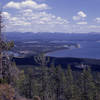
Land Manager: National Park Service - Yellowstone National Park
 Bechler Canyon
Bechler Canyon
31.6 mi 50.9 km • 1,408' Up 429.16 m Up • 2,766' Down 843.04 m Down




 Old Fai…, WY
Old Fai…, WY
 Terraced Falls
Terraced Falls
3.9 mi 6.2 km • 361' Up 110.13 m Up • 362' Down 110.24 m Down




 Yellows…, WY
Yellows…, WY
 Elephant Back Mountain
Elephant Back Mountain
3.8 mi 6.1 km • 773' Up 235.59 m Up • 772' Down 235.34 m Down




 Lake Vi…, WY
Lake Vi…, WY
 Mary Mountain-Nez Perce
Mary Mountain-Nez Perce
20.9 mi 33.7 km • 834' Up 254.26 m Up • 1,317' Down 401.52 m Down




 Canyon…, WY
Canyon…, WY
 Seven Mile Hole-Washburn Hot Springs
Seven Mile Hole-Washburn Hot Springs
13.3 mi 21.4 km • 2,016' Up 614.54 m Up • 2,017' Down 614.72 m Down




 Canyon…, WY
Canyon…, WY
 Mount Washburn
Mount Washburn
7.3 mi 11.7 km • 1,384' Up 421.81 m Up • 1,383' Down 421.56 m Down




 Canyon…, WY
Canyon…, WY






0 Comments